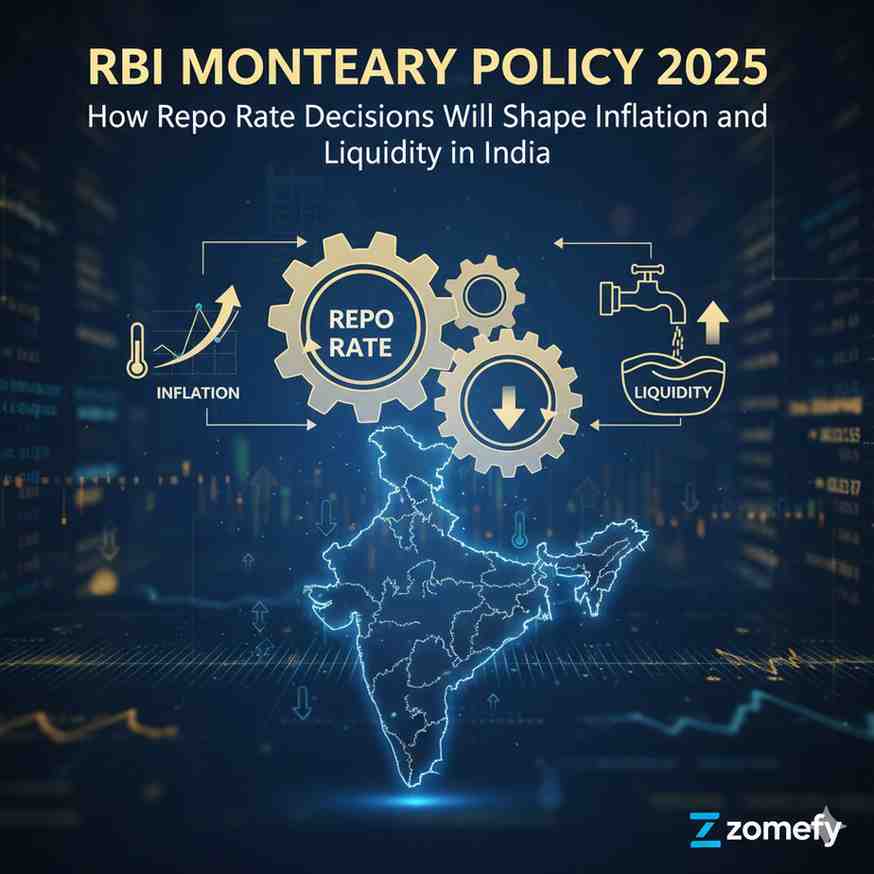MACD Strategy: Moving Average Convergence Divergence in Action
Complete guide to MACD trading strategy with Indian stock examples. Learn how to use MACD for trend analysis, signal generation, and trading decisions in Nifty, BankNifty, and individual stocks.
MACD Strategy: Moving Average Convergence Divergence in Action
What You Can Do Next
- Read the full article for complete insights
- Save for later reference
- Share with others learning about this topic
Image not available
The Moving Average Convergence Divergence (MACD) is one of the most powerful and versatile technical indicators in stock market analysis. Developed by Gerald Appel, MACD helps traders identify trend changes, momentum shifts, and potential entry/exit points. As we navigate through 2025's dynamic market conditions, understanding MACD and its practical applications becomes crucial for successful trading and investing. This comprehensive guide provides you with everything you need to know about MACD trading strategy with real Indian stock examples.
Understanding MACD: The Foundation
MACD is a trend-following momentum indicator that shows the relationship between two moving averages of a security's price. It consists of three components: the MACD line, the signal line, and the histogram. The indicator helps traders identify trend changes, momentum shifts, and potential reversal points.
MACD Components and Calculation
MACD is calculated by subtracting the 26-period EMA from the 12-period EMA. The signal line is a 9-period EMA of the MACD line. The histogram represents the difference between the MACD line and the signal line. These components work together to provide comprehensive market insights.
Key MACD Signals
Key MACD signals include line crossovers (MACD line crossing signal line), zero line crossovers (MACD line crossing zero), and histogram changes. Each signal type provides different insights into market momentum and trend direction.
MACD Trading Strategies for Indian Markets
MACD trading strategies can be adapted for different market conditions and stock characteristics. Indian markets have unique characteristics that require specific approaches to MACD trading.
Basic MACD Crossover Strategy
The basic MACD strategy involves buying when the MACD line crosses above the signal line (bullish crossover) and selling when the MACD line crosses below the signal line (bearish crossover). This strategy works well in trending markets but may generate false signals in ranging markets.
MACD Zero Line Strategy
The zero line strategy focuses on MACD line crossings above and below the zero line. A crossing above zero indicates bullish momentum, while a crossing below zero indicates bearish momentum. This strategy helps identify major trend changes.
MACD Divergence Strategy
MACD divergence occurs when price and MACD move in opposite directions. Bullish divergence (price makes lower lows while MACD makes higher lows) indicates potential upward reversal. Bearish divergence (price makes higher highs while MACD makes lower highs) indicates potential downward reversal.
Practical Examples with Indian Stocks
Real-world examples help understand how MACD works in different market conditions and with different stocks. These examples demonstrate various MACD strategies and their effectiveness.
Reliance Industries MACD Analysis
Reliance Industries, being a large-cap stock, shows clear MACD patterns. During the 2024 bull run, MACD consistently stayed above the signal line, indicating strong bullish momentum. Zero line crossovers provided excellent entry and exit signals, while histogram changes indicated momentum shifts.
TCS MACD Trading Example
TCS, as an IT stock, shows different MACD characteristics due to its defensive nature. The stock tends to have more moderate MACD movements, with crossovers often providing reliable signals. MACD divergence has been particularly effective in identifying major trend reversals in TCS.
Banking Stocks MACD Patterns
Banking stocks like HDFC Bank and ICICI Bank show more volatile MACD patterns due to their sensitivity to interest rate changes and economic conditions. MACD crossovers combined with volume analysis provide more reliable signals for banking stocks.
Advanced MACD Techniques
Advanced MACD techniques can enhance trading effectiveness and reduce false signals. These techniques require more experience but can significantly improve trading performance.
MACD with Multiple Timeframes
Using MACD across multiple timeframes can provide more comprehensive market analysis. Daily MACD provides trend direction, while hourly MACD provides entry and exit timing. Longer timeframes (weekly, monthly) provide trend context and major reversal signals.
MACD with Volume Analysis
Volume confirmation can enhance MACD signals. High volume during MACD crossovers often indicates strong momentum, while low volume may signal weak moves. Volume analysis helps distinguish between strong and weak MACD signals.
MACD Histogram Trading
The MACD histogram provides additional insights into momentum changes. Histogram bars above zero indicate bullish momentum, while bars below zero indicate bearish momentum. Changes in histogram slope can signal momentum shifts before line crossovers occur.
Conclusion
MACD is a powerful technical indicator that can significantly enhance your trading and investing decisions when used correctly. The key to successful MACD trading lies in understanding its components, combining it with other indicators, and adapting strategies to different market conditions and stock characteristics. Remember that no single indicator is perfect, and MACD should be used as part of a comprehensive trading strategy. Practice with paper trading and start with small positions to gain experience and confidence in MACD-based strategies.
Frequently Asked Questions
What are the best MACD settings for Indian stocks?
The standard MACD settings (12, 26, 9) work well for most Indian stocks, but you can adjust them based on stock characteristics. For volatile stocks, use faster settings (8, 17, 9) for more sensitive signals. For stable stocks, use slower settings (19, 39, 9) for more reliable signals. Test different settings to find what works best for your trading style.
How do I avoid false MACD signals?
To avoid false MACD signals, combine MACD with other indicators like RSI, moving averages, and volume analysis. Use MACD divergence for more reliable signals, and avoid trading against the overall trend. Also, consider market conditions and stock-specific characteristics when interpreting MACD signals.
What is the difference between MACD line and signal line?
The MACD line is the difference between the 12-period and 26-period EMAs, while the signal line is a 9-period EMA of the MACD line. Crossovers between these lines generate trading signals. The MACD line represents momentum, while the signal line acts as a trigger for buy/sell signals.
How do I use MACD histogram for trading?
The MACD histogram shows the difference between the MACD line and signal line. Positive histogram bars indicate bullish momentum, while negative bars indicate bearish momentum. Changes in histogram slope can signal momentum shifts before line crossovers occur. Use histogram changes to anticipate potential crossovers.
Can MACD be used for all types of stocks?
MACD can be used for most stocks, but its effectiveness varies. It works best with liquid, actively traded stocks that show clear trends. For penny stocks or illiquid stocks, MACD may generate false signals due to low trading volume. Large-cap stocks generally provide more reliable MACD signals than small-cap stocks.
Continue Your Investment Journey
Discover more insights that match your interests

Real-Time Payments: The 5G Revolution in Financial Transactions
Detail how 5G technology is turbocharging peer-to-peer, cross-border, and in-store payments, making financial exchanges instant, seamless, and more secure.

RBI Monetary Policy 2025: How Repo Rate Decisions Will Shape Inflation and Liquidity in India
In October 2025, the Reserve Bank of India (RBI) maintained its key repo rate at 5.

Navigating India’s Surge in Financial Sector M&A and Foreign Investments: Strategic Insights for Retail Investors in 2025
India’s financial sector is undergoing a transformative phase in 2025, marked by a surge in mergers and acquisitions (M&A) and a notable influx of foreign investments.

RegTech's Rise: Automating Compliance and Fighting Financial Crime
Examine the adoption of regulatory technology by financial companies to simplify compliance, reduce risks, and respond to global regulatory demands faster and smarter.
Explore More Insights
Continue your financial education journey
